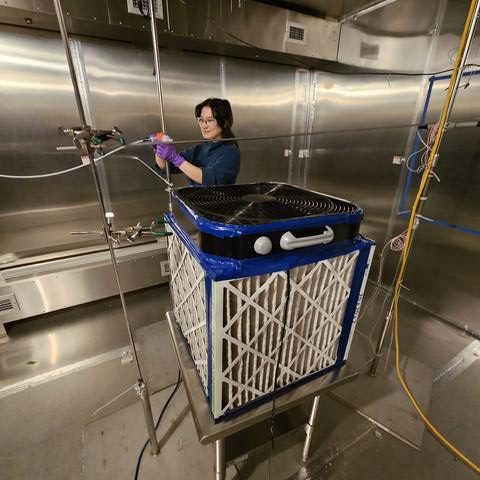Some Air Cleaners Release Harmful By-Products. Now We Have a Way to Measure Them.
Summary
NIST has led the development of a new, consensus ASTM test method that reliably measures unwanted chemical by-products produced by certain portable air cleaners. The standard specifies running a device for four hours in a sealed chamber containing defined chemicals and then testing for ozone, formaldehyde and ultrafine particles. Measurement methods include UV absorption for ozone and formaldehyde and scanning mobility particle sizing (SMPS) for ultrafine particles.
Author’s take (punchy): This is a proper fix — not just a lab trick. A clear, agreed test means manufacturers can actually see when their devices cause harm and regulators and buyers can compare products fairly. Big deal.
Key Points
- NIST led development of a new ASTM consensus standard test method for air-cleaner by-products.
- The test measures three specific pollutants: ozone, formaldehyde and ultrafine particles.
- Testing protocol: run the cleaner 4 hours in a sealed chamber with set chemicals, then sample and analyse.
- Ozone and formaldehyde are measured via UV absorption; ultrafine particles via SMPS (charging, size-selection and laser counting after humidification).
- Not all cleaners are the same: passive fibrous filters mainly remove particles, while active technologies (UV, ionisers, catalysts) can create new chemical by-products.
- A standardised method enables apples-to-apples comparisons, product improvements and the setting of emission limits for safety.
Content Summary
Demand for portable air cleaners rose sharply after COVID-19 and during wildfire seasons. While many devices remove particles effectively, some active cleaners (those using UV, ionisation or catalytic reactions) can produce harmful secondary pollutants. Until now, there wasn’t a consistent, widely accepted test to quantify those by-products.
The new ASTM test — produced with NIST’s research and stakeholder coordination over four years — fills that gap. It focuses on three measurable outcomes that indicate unwanted indoor chemistry: ozone, formaldehyde and ultrafine particles. The test’s measurement techniques are straightforward: UV spectroscopy for gas-phase oxidants and decomposition products, and SMPS for counting very small particles by electrically charging, sizing and then growing them to detect by laser scattering.
Context and Relevance
Why this matters: consumers bought more air cleaners to reduce infection risk and smoke exposure, but some devices can inadvertently worsen indoor air chemistry. The new standard gives manufacturers, testing labs and regulators a common yardstick to assess devices’ net impact on indoor air. That supports improved product design, clearer consumer guidance and potential regulatory emission limits.
For industry: it creates a credible route to certification and improvement. For public-health stakeholders: it supplies data needed to judge whether an air cleaner truly makes indoor air safer. For consumers: it should make product comparisons much more reliable.
Why should I read this
Short version: if you buy or make air cleaners (or care about indoor air), this matters. The story explains a practical test that finally lets us spot devices that clean some things but make others worse — and gives everyone a way to prove it. Saves you time and guesswork when choosing a device.

